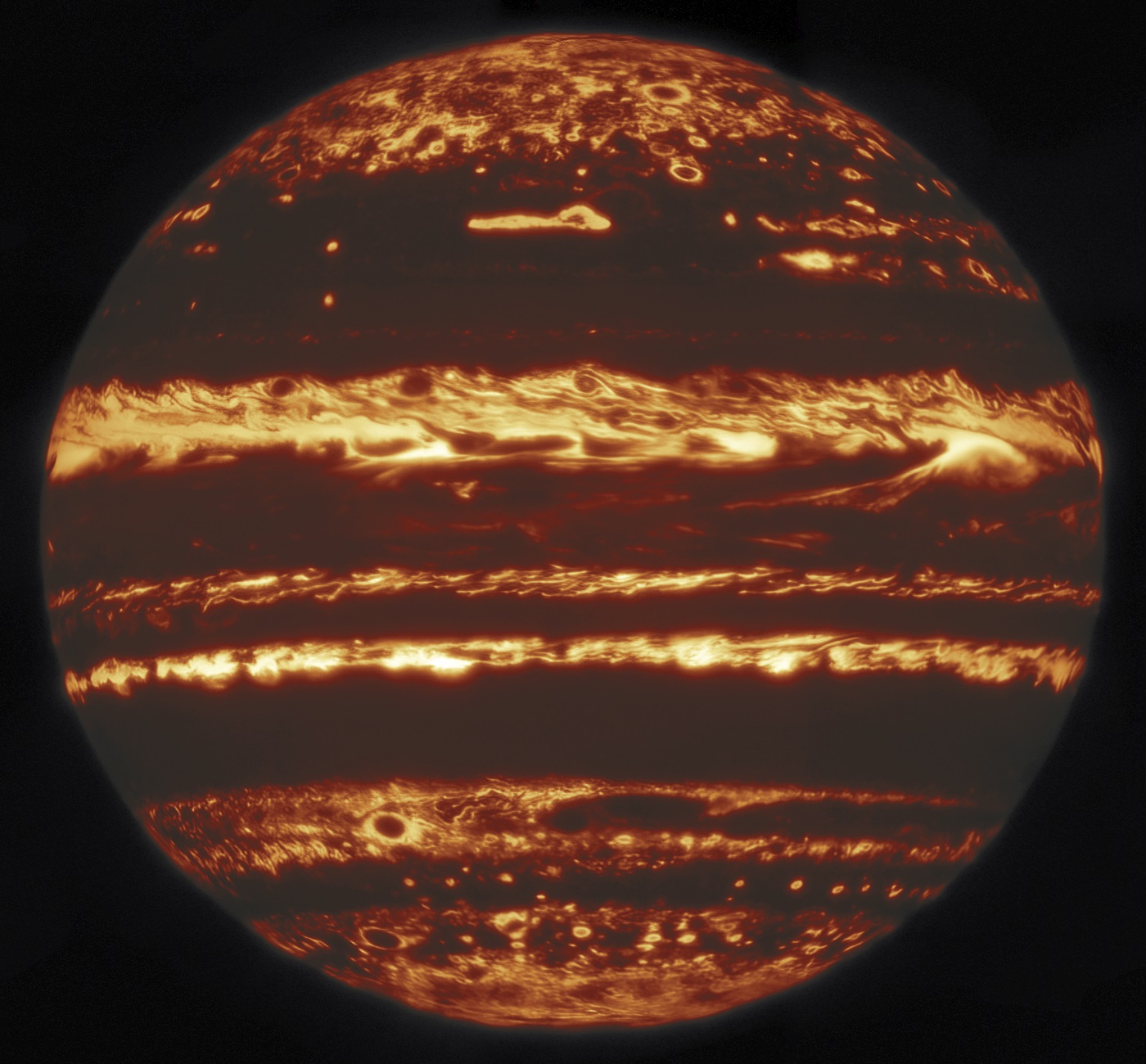Wong, M.H., A.A. Simon, J.W. Tollefson, I. de Pater, M. Barnett, A.I. Hsu, A.W. Stephens, G.S. Orton, S.W. Fleming, C. Goullaud, W. Januszewski, A. Roman, G.L. Bjoraker, S.K. Atreya, A. Adriani, L.N. Fletcher (2020), High-resolution UV/optical/IR imaging of Jupiter in 2016-2019, The Astrophysical Journal Supplement Series, Series, 247, 58 (25 pp.) (http://dx.doi.org/10.3847/1538-4365/ab775f)
 |
| Credit: International Gemini Observatory/NOIRLab/NSF/AURA M.H. Wong (UC Berkeley) and team Acknowledgments: Mahdi Zamani. |
Images from both facilities were released to the public and created quite a splash, with the Gemini "lucky imaging" at 5 microns even making the BBC website. Here is a collection of the media releases:
Hubble Space Telescope
Gemini Observatory
Berkeley
The full dataset is also available via open access on the MAST archive.

No comments:
Post a Comment